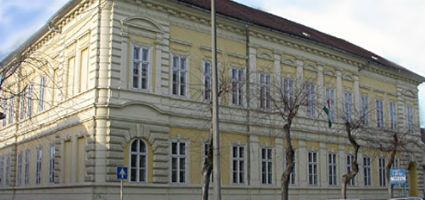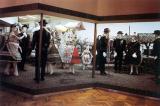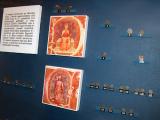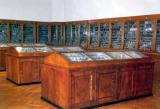2025. July 8. Tuesday
Károly Viski Museum - Kalocsa
 |
Address: 6300, Kalocsa Szent István király út 25.
Phone number: (78) 462-351
E-mail: info@viskikarolymuzeum.hu
Opening hours: 01.11-14.03: closed
15.03-14.05 and 16.09-31.10: Tue-Sat 9-17 15.05-15.09: Wed-Sun 9-17 |
We may regard the collection gathered in the corridor of the Town Council in 1932 as the legal predecessor of the Károly Viski Museum. After long years of disputes the Committee of the Town Museum was formed, to the request of which the general assembly handed over one of the corridors of the Town Council.
On 2nd June 1932 deacon Győző Horváth (Ph.D.) opened the first museum of Kalocsa. Unfortunately, most of the materials collected were scattered and destroyed during World War II. There are only a few items still kept from these times. Some part of the materials collected by Lajos Gábor were gifted or purchased back to the museum.
State authorities were several times urging for final settling of the museum, but plans were all the time coming to nought. At first a beautiful building (18th century) of the Holy trinity square was offered, but when director Ernő Laszczik was just about to move in, the Russian army seized the building.
Later the building between the cathedral and the convent was designated, but after several negotiations, the building was handed over for other purposes. The museum was still at the Town Council at the time of the nationalization. At the death of Ernő Laszcik (1955), the case of the museum came to a halt. Materials were temporarily kept in the local secondary grammar school.
However, in 1970 the Town and County Council decided to develop the ethnic-historic collection into an independent region museum. A school of the town centre was given over to the museum. After 1971 the museum was increasingly extending and became a region museum owning a rich museological collection. Imre Romsics has been the director of the museum since 1993.
The Károly Viski Museum of Kalocsa cares for ten different collection. One of the most valuable parts of the museum is the Mineral collection, exhibited under the title of The Minerals and Life. Another remarkable part is the Coin collection, which was also transferred to the museum from the Jesuit secondary school.
The most cherished and interesting part of the ethnographic collection is that of the textiles, which exhibits various styles of folk art and dress from the middle of the 19th century up to today.
The archaeological collection does not count many items, still there are some extremely valuable items excavated from a cemetery from the times of the Hungarian conquest.
The collection of historical documents includes numerous interesting and treasured materials, such as old photos, postcards, newspapers etc.
Our historical and fine arts collection is not too extensive, but from the aspect of our town and region, they list especially precious items. The fifth part of our library of more than 10.000 volumes are prints of Kalocsan interest.
On 2nd June 1932 deacon Győző Horváth (Ph.D.) opened the first museum of Kalocsa. Unfortunately, most of the materials collected were scattered and destroyed during World War II. There are only a few items still kept from these times. Some part of the materials collected by Lajos Gábor were gifted or purchased back to the museum.
State authorities were several times urging for final settling of the museum, but plans were all the time coming to nought. At first a beautiful building (18th century) of the Holy trinity square was offered, but when director Ernő Laszczik was just about to move in, the Russian army seized the building.
Later the building between the cathedral and the convent was designated, but after several negotiations, the building was handed over for other purposes. The museum was still at the Town Council at the time of the nationalization. At the death of Ernő Laszcik (1955), the case of the museum came to a halt. Materials were temporarily kept in the local secondary grammar school.
However, in 1970 the Town and County Council decided to develop the ethnic-historic collection into an independent region museum. A school of the town centre was given over to the museum. After 1971 the museum was increasingly extending and became a region museum owning a rich museological collection. Imre Romsics has been the director of the museum since 1993.
The Károly Viski Museum of Kalocsa cares for ten different collection. One of the most valuable parts of the museum is the Mineral collection, exhibited under the title of The Minerals and Life. Another remarkable part is the Coin collection, which was also transferred to the museum from the Jesuit secondary school.
The most cherished and interesting part of the ethnographic collection is that of the textiles, which exhibits various styles of folk art and dress from the middle of the 19th century up to today.
The archaeological collection does not count many items, still there are some extremely valuable items excavated from a cemetery from the times of the Hungarian conquest.
The collection of historical documents includes numerous interesting and treasured materials, such as old photos, postcards, newspapers etc.
Our historical and fine arts collection is not too extensive, but from the aspect of our town and region, they list especially precious items. The fifth part of our library of more than 10.000 volumes are prints of Kalocsan interest.


